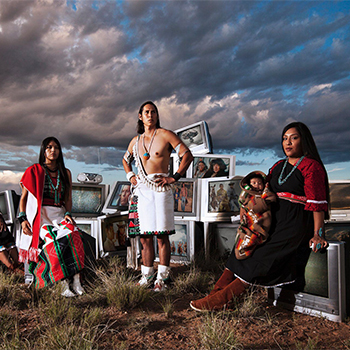This thesis explores the ways in which photography depicts and shapes cultural identities across various social and historical contexts. It focuses on the mechanisms such as aestheticization, staging, and visual exclusion, through which photography influences collective perceptions of cultures and communities.
Drawing on selected works by Edward Curtis and Karol Plicka, the thesis investigates how photography contributed to the construction of images of indigenous communities and national identities at a time when these identities lacked a stable visual form and were subject to symbolic formation. A separate chapter is devoted to the portrayal of Indigenous tribes from different parts of the world, highlighting the persistent power asymmetry between the photographer and the photographed subject.
The research draws on visual studies, postcolonial theory, and cultural sociology, aiming to offer a critical reflection on photography as an instrument of symbolic power. The aim is to show how visual representation shapes notions of what is considered culturally valuable, authentic, and worthy of representation.
